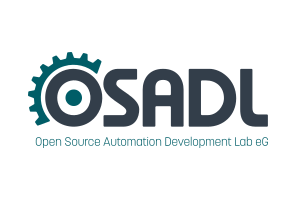Background
Practically all major causes of a program crash in user space lead to so-called exception processing, whereby the microprocessor is forced to continue its program execution at a previously defined address and terminate the program in such a way that the other currently running processes can continue their work unhindered. As a rule, not only is a single address defined in advance, but different sections of code are programmed for the various causes that lead to exception processing, so that the operating system can react in a typical manner. However, the processor not only continues its program sequence at another location, but a data structure with information on the cause of the exception is also stored on the stack. In the event of an error, this information can be used to reconstruct the crash and, if the program has been compiled with the necessary debug information, can even help determine the responsible line in the source code. This type of functionality, which enables debugging even after a program has crashed, is known as a post-mortem debugger.
Post-mortem debugger
The post-mortem debugger that is part of the example C program in the provided archive, consists of a signal handler and a decoder trace_it(). In case of exception processing, the signal handler calls the decoder that examines the stack frames and prints them out. In particular, the stack frame with the address where the exception was triggered is examined and an attempt is made to retrieve the corresponding source code line. The latter, however, requires that the program was compiled with debug symbols.
Artifical exception trigger
The program also contains an artificial exception trigger crash_it() that can be configured via command line argument:
| Command line symbol | Exception | Signal number |
|---|---|---|
| a | Invalid address | 11 |
| p | Privileged instruction | 11 |
| i | Illegal instruction | 11 |
| 0 | Integer division by 0 | 8 |
| . | Floating point division by 0.0 | 8 |
| n | Square root of a negative number | 8 |
In a real word, however, the trigger function crash_it(), of course, must not be used (your program will eventually take care of it  ), but only the signal handler and the stack frame decoder trace_it().
), but only the signal handler and the stack frame decoder trace_it().
Example of exception processing after trying to access an invaliud address
./backtrace a
Forcing exception handling by dereferencing 0x00000000
Caught signal 11
Stacktrace:
Frame 1: 0x00401373 (./backtrace() [0x401373])
Frame 2: 0x00401481 (./backtrace(signal_handler+0x15) [0x401481])
Frame 3: 0xe775b490 (/lib64/libc.so.6(+0x1a490) [0x7f4be775b490])
Frame 4: 0x00401246 (./backtrace() [0x401246])
Frame 5: 0x004014dd (./backtrace(main+0x52) [0x4014dd])
Frame 6: 0xe7744488 (/lib64/libc.so.6(+0x3488) [0x7f4be7744488])
Frame 7: 0xe774454b (/lib64/libc.so.6(__libc_start_main+0x8b) [0x7f4be774454b])
Frame 8: 0x00401115 (./backtrace(_start+0x25) [0x401115])
Executing
addr2line -e backtrace 0x00401246
may locate the problem, if debug symbols are available
/usr/src/backtrace/backtrace.c:51
Another example of exception processing after trying to calculate the square root of a negative number
Should the crash occur in a library, the source code location can only be found, if a debug version of that library is used:
./backtrace-dbg n
Forcing exception handling by square root of a negative number
Caught signal 8
Stacktrace:
Frame 1: 0x00401393 (./backtrace-dbg() [0x401393])
Frame 2: 0x00401593 (./backtrace-dbg(signal_handler+0x15) [0x401593])
Frame 3: 0x2fd1f490 (/lib64/libc.so.6(+0x1a490) [0x7f892fd1f490])
Frame 4: 0x004016a4 (./backtrace-dbg(__ieee754_sqrt+0x4) [0x4016a4])
Frame 5: 0x00401346 (./backtrace-dbg() [0x401346])
Frame 6: 0x004015ef (./backtrace-dbg(main+0x52) [0x4015ef])
Frame 7: 0x2fd08488 (/lib64/libc.so.6(+0x3488) [0x7f892fd08488])
Frame 8: 0x2fd0854b (/lib64/libc.so.6(__libc_start_main+0x8b) [0x7f892fd0854b])
Frame 9: 0x00401135 (./backtrace-dbg(_start+0x25) [0x401135])
Executing
addr2line -e ./backtrace-dbg __ieee754_sqrt+0x4
may locate the problem, if debug symbols are available
/builddir/build/BUILD/glibc-2.31-74-gd0c84d22b6/math/../sysdeps/x86_64/fpu/e_sqrt.c:28
Link to source code archive
An archive with the complete source code and a related Makefile is available online here.




